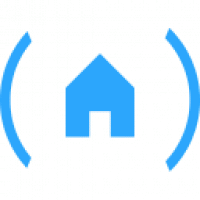Exploring the Future of HVAC: Innovations and Emerging Technologies
Your HVAC system is much more than a single unit — it’s a network of units and parts on the inside and outside your home that work together to meet temperature, comfort and air quality needs.
To find the best system for your home, consider factors like energy efficiency, capacity, maintenance requirements, sound levels and price. Find out more at hvac Coquitlam.
Thermostat
The thermostat monitors the environment and activates the rest of the HVAC system to heat or cool as needed. It is often installed on the wall where it can be easily accessed. Thermostats are available in manual, programmable and smart models.
Generally, they work on the same principle as light switches do to open or close power circuits: heating causes metal strips to expand, and this expansion can either complete or break an electrical circuit that tells the heater or AC to come on. Traditional mechanical thermostats use a bimetallic strip that consists of two different metals with differing coefficients of thermal expansion. When the metals expand at a different rate, the bimetallic strip bends and switches the circuit on or off.
Modern programmable and smart thermostats allow you to set your heating and cooling schedule according to your daily routine. Some even provide energy reports to help you understand how your home uses energy and how to make better choices.
Air Exchanger
Air exchangers work with your HVAC system to provide fresh, clean indoor air. They pull in cold, outside air through ductwork and preheat it with warm air from your home’s heating system before pushing it through vents. They also remove excess moisture and pollutants in the process.
Stale, dusty indoor air can trigger allergies and asthma and cause other health issues. Air exchangers continuously cycle out stale air and push out allergens like pollen, mold and pet dander while pulling in cool, fresh outdoor air.
Some systems rely on your existing ductwork and registers while others use dedicated ductwork to bring in fresh air. An HRV (heat recovery ventilator) system is best for cold climates because it recaptures heat from outgoing stale air and pre-warms the incoming air, cutting down energy consumption.
Condenser
The condenser is the heart of an HVAC system for either a home air conditioner or heat pump. It sits outside the house and connects to the indoor air handler with tubing for refrigerant vapor.
When the vapor enters the condenser, it goes over a series of coils to remove heat from outdoor air. A fan blows cool outdoor air over these copper coils and metal fins to quickly reduce their temperature. The refrigerant gas then goes back into the compressor to be cooled further.
The condenser should be inspected for dents or dings that may prevent the unit from being able to do its job. Debris can also clog the coil, resulting in poor air flow. If you see any signs of this, it’s a good idea to call an AC professional to get the problem looked at. A clogged condenser will force your system to work harder to achieve the same results as before.
Ductwork
The ductwork is the network of pipes that transports conditioned air from your HVAC system to the rooms of your house. Ducts usually snake through attics, crawlspaces, and basements. They distribute cooled air in summer and warm air in winter. They also circulate filtered indoor air. Ductwork is required by furnaces and central air conditioners but not by ductless mini-split systems.
Rigid sheet metal ducts have a durable surface that resists dirt and moisture. They are typically available in either galvanized or aluminum. The interior is often lined with fiberglass to limit heat loss. This type of duct is most commonly used in commercial buildings, but is also found in residential homes.
Leaking or improperly sized ducts cause inefficient heating and cooling. They require the system to work harder and expend more energy. An abrupt spike in your utility bill is one of the most common signs that your ductwork needs attention. It is important to have your ducts cleaned every 3 to 5 years to keep them functioning properly.
